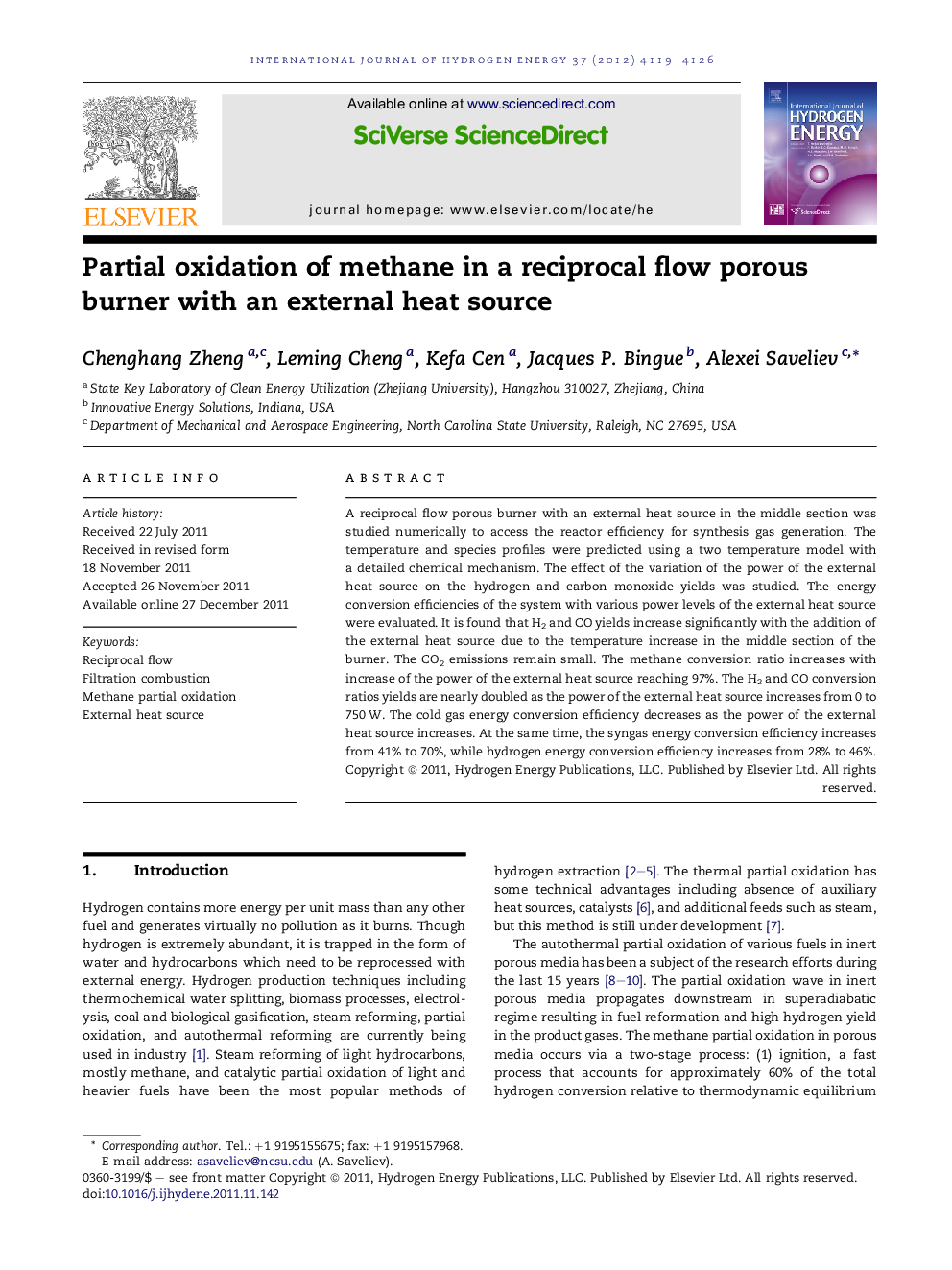| Article ID | Journal | Published Year | Pages | File Type |
|---|---|---|---|---|
| 1275465 | International Journal of Hydrogen Energy | 2012 | 8 Pages |
A reciprocal flow porous burner with an external heat source in the middle section was studied numerically to access the reactor efficiency for synthesis gas generation. The temperature and species profiles were predicted using a two temperature model with a detailed chemical mechanism. The effect of the variation of the power of the external heat source on the hydrogen and carbon monoxide yields was studied. The energy conversion efficiencies of the system with various power levels of the external heat source were evaluated. It is found that H2 and CO yields increase significantly with the addition of the external heat source due to the temperature increase in the middle section of the burner. The CO2 emissions remain small. The methane conversion ratio increases with increase of the power of the external heat source reaching 97%. The H2 and CO conversion ratios yields are nearly doubled as the power of the external heat source increases from 0 to 750 W. The cold gas energy conversion efficiency decreases as the power of the external heat source increases. At the same time, the syngas energy conversion efficiency increases from 41% to 70%, while hydrogen energy conversion efficiency increases from 28% to 46%.
► Syngas generation in a reciprocal flow porous partial oxidation system is studied numerically. ► An addition of the external heat source significantly affects H2 and CO yields. ► Hydrogen yield increases with increase of the power of the external heat source.
